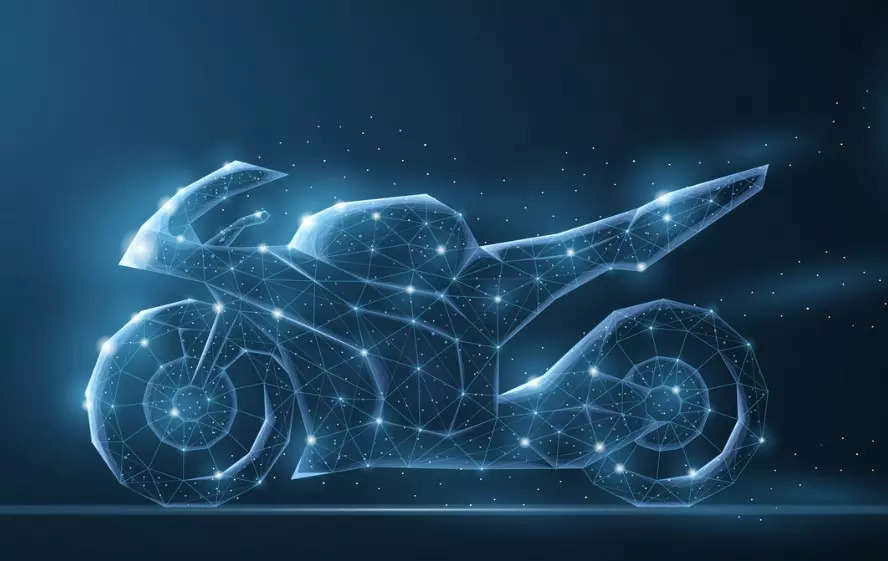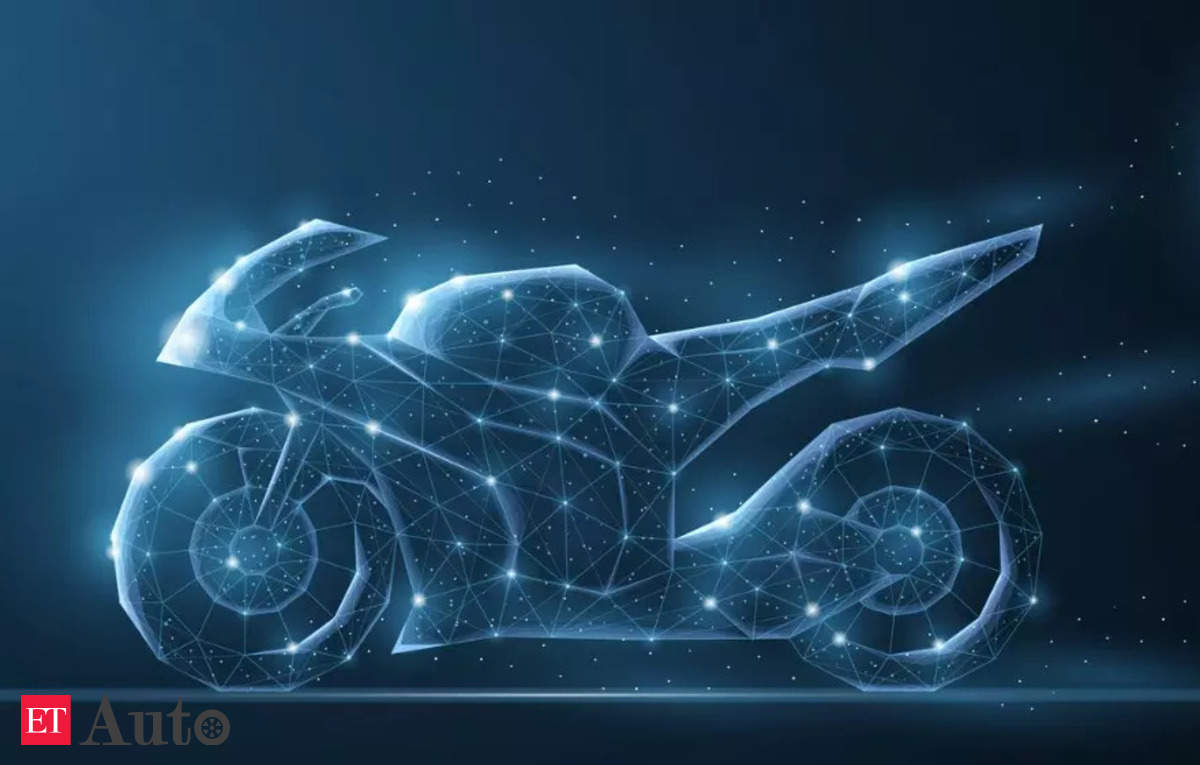
Syed Shazil Hussain
New Delhi: In the fast-paced world of two-wheelers, the journey from pedal-powered bicycles to electric scooters and smart motorcycles has been nothing short of remarkable. As technology continues to evolve, the two-wheeler industry is undergoing a transformation that promises safer, more efficient, and environmentally friendly transportation.
Technology in two-wheelers has evolved significantly across various segments, offering a wide range of features and innovations to cater to the different consumer needs. Let’s break down the tech features in commuter motorcycles and explore how these technologies advance as we move up in segments:
Commuter motorcycles are known for their affordability, reliability, and fuel efficiency. In this segment, technology is primarily focused on providing basic features and maximizing fuel economy. Some common features of this segment are: Fuel Injection, Digital Instrument Clusters. Some models may include a gear position indicator and trip meters, CBS (Combined Braking System), LED Lighting for better visibility and energy efficiency.
As we move up the segment, we find more advanced technology and additional comfort and convenience features such as: Anti-lock Braking System (ABS). Mid-range bikes often come with ABS, which enhances braking safety. The other new features include:
More advanced digital displays: Instrument clusters may become more feature-rich, offering additional information like gear shift indicators, fuel efficiency metrics, and real-time mileage.
Connectivity: Motorcycles may offer smartphone connectivity via Bluetooth, allowing riders to access navigation, music, and calls directly through the bike’s display.
Riding Modes: Some motorcycles offer multiple riding modes that allow riders to adjust the bike’s performance characteristics according to road conditions or personal preferences.
Cruise Control: In some mid-level motorcycles, you may find cruise control features for relaxed highway cruising.
In the premium segment, you can expect cutting-edge technology and features designed to enhance both performance and rider experience. They include:
Advanced Rider Aids: Premium bikes often come with advanced rider aids such as traction control, wheelie control, and adjustable suspension settings.
Full-color TFT displays: High-resolution, full-color TFT instrument clusters provide a wealth of information and customization options.
Cornering ABS: This feature allows ABS to function even while leaning into corners, further enhancing safety.
Keyless Ignition: Keyless start systems in some motorcycles add convenience and security.
Advancements in technology are continually evolving, so newer features may become available in lower-priced segments over time as well. Ultimately, the choice of a two-wheeler depends on individual preferences, budget, and intended use, and riders can find a suitable option with the level of technology that meets their needs.
Now, after listing the common features in modern two-wheelers let’s discuss the tech evolution and upcoming trends in the two-wheelers industry.
Electric revolution
The most significant trend in the two-wheeler industry in recent years has been the rise of electric vehicles (EVs). As concerns about environmental sustainability and emissions reduction grow, manufacturers are increasingly turning to electric powertrains to meet these demands. Electric scooters and motorcycles have come a long way from being seen as mere novelties to becoming serious contenders in the market. The zero tailpipe emissions and lower cost of operation make EVs a strong choice for the customers.
Battery technology has also seen substantial advancements, leading to improved range and charging times for electric two-wheelers. Lithium-ion batteries have become the standard, offering high energy density and long life cycles. Moreover, rapid charging infrastructure and swappable batteries are making it more convenient for riders to charge their electric bikes on the go.
Connected mobility
Just like passenger vehicles, the digital age has brought about a new era of connected mobility in the two-wheeler space as well. Smart motorcycles and scooters equipped with advanced connectivity features are becoming increasingly popular. These features not only enhance the riding experience but also improve safety and convenience.
One of the notable trends in connected mobility is the integration of smartphone connectivity. Many modern two-wheelers, even some budget offerings, now come with Bluetooth-enabled dashboards that allow riders to pair their smartphones. This connection enables navigation, music control, and even call handling directly from the bike’s dashboard, reducing distractions and increasing rider safety.
In addition to smartphone connectivity, some premium two-wheelers are equipped with advanced GPS systems that provide real-time traffic updates, weather information, collision detection systems and suggested alternate routes. These systems are often an additional option or a third party accessory.
Autonomous riding
While fully autonomous motorcycles may still be on the horizon, the concept of autonomous riding assistance has been gaining traction. Companies like BMW and Honda are investing in technologies that can help riders maintain control and stay safe on the road.
Honda, in 2017 introduced a self-balancing motorcycle concept, the Honda Riding Assist. This technology allows the motorcycle to maintain balance, even at low speeds, reducing the risk of tip-overs and making it easier for beginners to ride.
While these autonomous technologies are still in the experimental phase, they hold promise for enhancing rider safety and reducing accidents in the future.
Customisation
In the two-wheeler industry, customisation and personalisation have been important to riders. However, advancements in technology are taking customisation to a whole new level.
3D printing technology has opened up possibilities for riders to customise their motorcycles and scooters like never before. Riders can design and print their own unique parts and accessories, giving their two-wheelers a one-of-a-kind look and feel.
Moreover, Augmented Reality (AR) is being used to create virtual showrooms and design studios where riders can visualize their customisations in real-time before making any modifications. This technology allows for a more immersive and interactive customisation experience.
Safety innovations
Safety remains a top concern for both riders and manufacturers. In recent years, the two-wheeler industry has seen remarkable advancements in safety innovations.
Helmet technology has taken a leap forward with the introduction of smart helmets. These helmets are equipped with built-in communication systems, heads-up displays, and even rearview cameras. This technology not only enhances safety but also provides riders with important information without taking their eyes off the road.
In addition to helmets, motorcycle jackets and gear are also getting smarter. Some jackets and racing suits are designed with built-in airbag systems that can inflate in the event of a collision, providing additional protection to the rider.
Furthermore, advanced rider-assistance systems, such as blind-spot monitoring and adaptive cruise control, are becoming more common in high-end motorcycles. These systems help riders stay aware of their surroundings and maintain safe distances from other vehicles on the road.
The rise of micro-mobility
In urban areas, the concept of micro-mobility is gaining momentum. Micro-mobility refers to the use of small, lightweight vehicles for short-distance travel within cities. Electric scooters and e-bikes are at the forefront of this movement.
Cities around the world are implementing shared electric scooter programs, allowing residents and visitors to easily rent and ride electric scooters for short trips. These programs are convenient and eco-friendly alternative to traditional car rentals and ridesharing services.
E-bikes are also becoming increasingly popular for urban commuting. They offer an energy-efficient mode of transportation and contribute to reduction of carbon footprint.
The two-wheeler industry is at an exciting crossroads, with technology driving significant advancements and shaping the future of mobility. Electric vehicles, connected mobility, autonomous riding, customization, safety innovations, and the rise of micro-mobility are all key trends that are transforming the way we ride.
As technology continues to evolve, the two-wheeler space will see even more innovations in the coming years. These innovations will not only make riding more convenient and enjoyable but also contribute to a greener and safer future for urban transportation.
Whether you’re a seasoned rider or someone considering their first two-wheeled adventure, the future of the two-wheeler industry promises a ride into a world of innovation and possibility.









